Back in 2021, Matthew Bramante elaborated on the visual effects work on the first season of Sweet Tooth. Following that, he joined the Paper Girls series. Now, he’s here to discuss the final season of Sweet Tooth.
After discussing his involvement with the inaugural season of Sweet Tooth, Rob Price moved on to projects like Midnight Mass, The Midnight Club, and Gen V.
For the past 12 years, Danica Tsang has been with Zoic Studios, where she has produced visual effects for a multitude of series including Once Upon a Time, The Twilight Zone, The Right Stuff, and, most prominently, Sweet Tooth.
How did you organize the work between you?
Matt Bramante // My role as the production VFX largely consisted of working with the creative team of showrunner, writers, directors, producers and other department heads to breakdown the scripts and plan how and where VFX were needed in prep, often involving overseeing previs, then seeing that through shooting of all main unit, plate unit and element photography. Once the show hit post, it was critical that with some of these large VFX scenes, that VFX was considered early in the cutting process, that involved me working with our showrunner Jim to postvis and help selecting plates to make sure the Zoic team had what they needed to execute on those shots.
In addition, on Sweet Tooth Season 3, we needed to really open the scope of what VFX needed to provide. Stepping into the setting of winter in Alaska, shot mostly in the summer in Auckland New Zealand. This required a new and changing environment multiple times per episode, and rarely did we have locations we could use for those. To help us, we stepped up our use of the LED volume for this Season, which also was run by my small New Zealand team of artists and engineers.
Rob Price & Danica Tsang // Working with Matt Bramante and Danica Tsang from prep to post pays off big for the VFX team. Having the same VFX team throughout the show’s entire run helped with trust and communication. Planning in prep directly impacted our ability to maximize what we achieved in post through multiple overlapping Seasons. Being spread across the globe, having supervisors and producers working on set and in the VFX house throughout helped us spread the collective knowledge.
What is your role on set, and how do you work with other departments?
Matt Bramante // I have always found that my favorite VFX work always starts with as much practical and in-camera work as possible. Which means, any given effect starts with a conversation about what we can and can’t do practically. Often after receiving a script or an outline, I would walk over to art dept and sit with our prod designer and hash out what they could build, or with locations to find if there was a location we could shoot plates at, or with the hybrids team, SFX team, etc to start with as much practical as possible. Of course with much of Season 3, we had to go outside to Alaska, which involved a whole new set of challenges that fell largely to the VFX department to solve.
For this we used the LED walls as an answer to as much as we could. Often shooting plates for the wall, but in some cases generating CG backgrounds or matte paintings with comped moving elements, or even miniatures. This required a lot of work with the art and locations team to make sure we could get access to snowy hills and mountains for all of that plate photography before the summer arrived, or build miniatures we could photograph and build out our environments. Beyond that, when we needed to really open up the scope, we would rely on CG set extensions, or add CG vehicles or buildings to our high wide helicopter or drone plates. And in a few cases we needed to build CG snow environments to be comped with plates of vehicles. But overall, a goal I had set out in the early days of this Season was to have every shot start with a piece of photography, even if we replaced it all, or replaced most of it. This required a lot of planning between departments and a lot of small splinter and second unit shoots to pick up various pieces.
As far as on set work, I had a great team of local on-set supervisors, and data wranglers to help cover the various units and shoot days. Each one would help breakdown, plan, and previs their block with me and then be there on the day to see that things were executed according to plan, or adjust that plan as needed. In addition, they would often help with comping and tweaking the LED content on the day to adjust to notes given by the directors and DoPs.
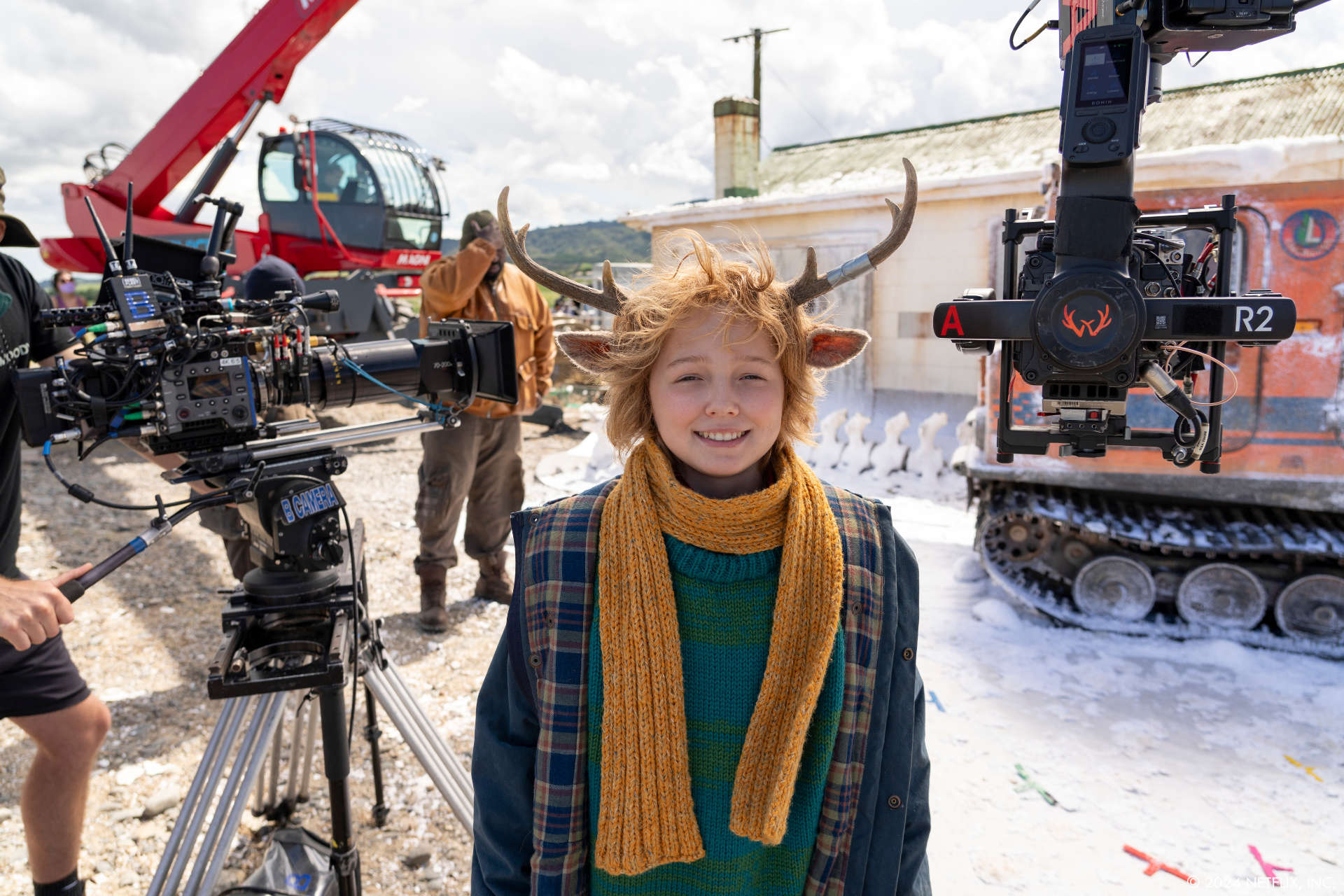
Can you walk us through the evolution of visual effects from the first Season to the final Season of Sweet Tooth?
Matt Bramante // From the beginning, our showrunner Jim expressed his goal to achieve a practical approach to VFX wherever possible. So even back then, we were looking to how to use whatever camera tricks, practical SFX, locations and set builds we could as a starting point to build the world and characters. And that was definitely a large consideration heading into Season 3.
The biggest thing I would say that evolved in our process was the use of LEDs to expand upon those “in-camera” VFX shots. I think at one point I counted up the amount of led sets in episodes 307 and 308, and found that those two episodes have more led sets than all of Season 1 and Season 2 combined. In addition, Season 3 saw the introduction of miniatures into our VFX tool kit, again another instance of an “in-camera” solution to VFX needs. But it’s critical to point out that even though there were plates shot of those miniatures or environments, the Zoic team really made the shots come to life with all their work. Often that involved adding CG parts to the environment, adding snow and atmosphere in the air, or comping additional elements of our characters on green screen.
Rob Price & Danica Tsang // The overall evolution was about finding newer ways to meld what we can do with other departments. There was always a sense of everyone trying to up their game. For example, in earlier Seasons we needed to animate ear movements in emotional scenes for Gus. By Season 3, the puppeteering team had refined what they could achieve with animatronics, which led to some fantastic practical performances, allowing us to put our efforts into other effects like expanded environment and creature work.
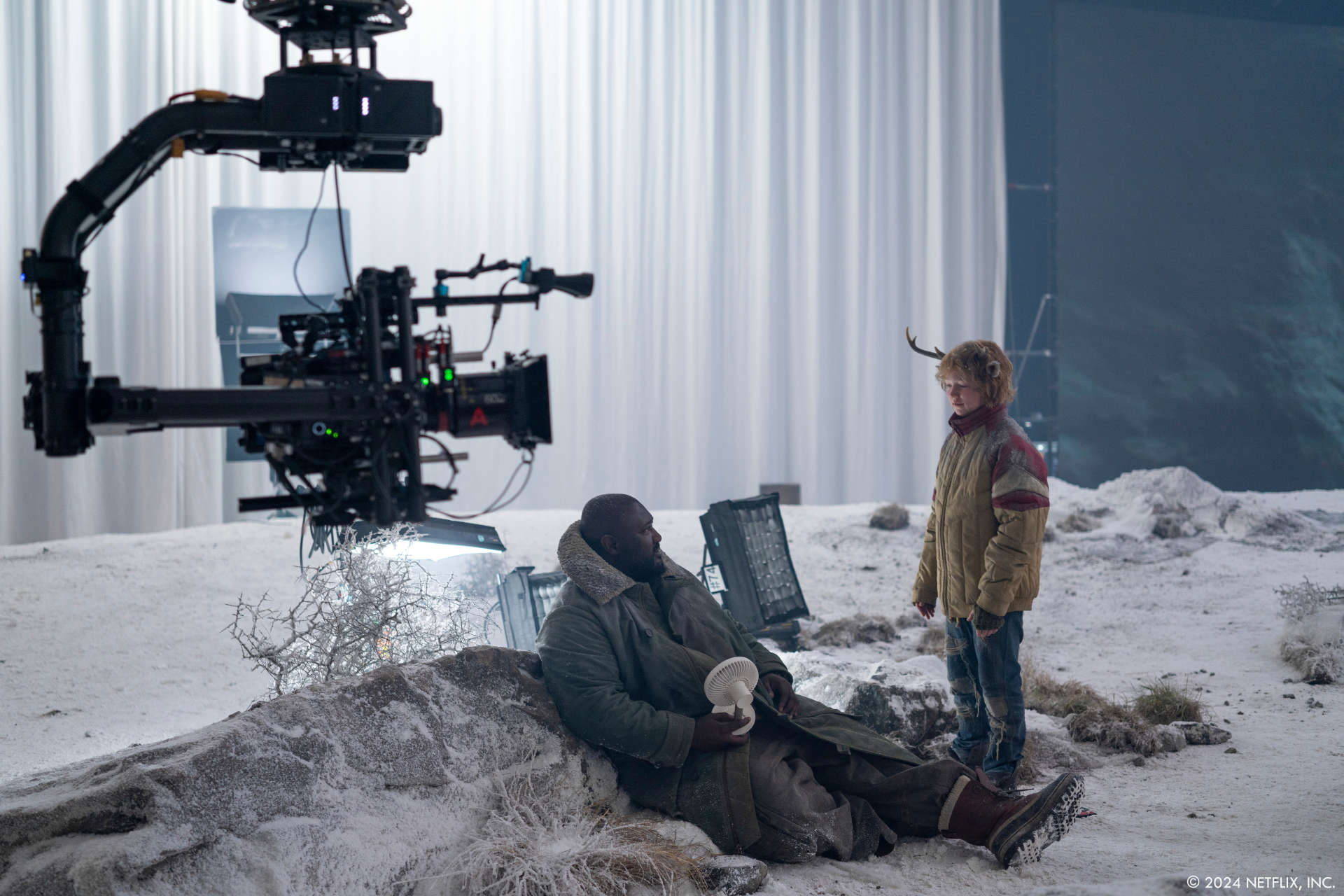
What were some of the major challenges you faced in creating visual effects for the final Season compared to previous Seasons?
Matt Bramante // Alaska is of course the biggest thing, as mentioned before, my goal was to shoot plates wherever possible to use either on the LED walls or as plates for final VFX shots, or even as matte painting elements for CG environments. When I arrived in Auckland, it was just at the very end of winter, but even winters in Auckland are very mild, rarely getting below 40 or 50 degrees. So with scripts only for the first few episodes, and rough outlines and descriptions of what would be in 303-308, Dave our DoP and I went down to the South Island, outside Queenstown to shoot helicopter plates over the Nevis range. Everything from high and wide establisher plates, to ground level plates, to montage pieces just for editorial.
301 presented us with a nice opportunity, to use our first look at Alaska in a practical way to help set a tone and an aesthetic for the rest of the Season. One scene in particular being the snowmobile chase with birdie. By doing that largely practically, it helped to give us a language for the rest of the series to match to and made the viewer more likely to buy into some of the more VFX or stage bound scenes. That 301 snowmobile chase was shot at a cross country ski field on the South Island. All wide shots were done practically with stunt doubles, but the close ups of the actors were shot on LEDs back at the stages months later.
While we were shooting the stunt work, we were able to fit in more drone plates and driving plates out there at the ski field. We even stayed overnight in a cabin on the side of the mountain to shoot sunsets and sunrises while a storm descended on us. Those plates with the helicopter work over Nevis made up the majority of our Alaska photography for the Season. Which then needed to have CG vehicles or buildings added to them. And of course in a few instances, the Zoic team needed to make a fully bespoke CG shot of Alaska too.
Rob Price & Danica Tsang // The scale we needed across the board. This story begins in Yellowstone and ends in Alaska. We needed a wide range of different environments, vehicles, and characters along the way. Each episode has its own unique challenges and looks, unlike most episodic projects where you might be within one location for several episodes or a Season.
How did the visual effects pipeline for Sweet Tooth change or improve throughout the series?
Rob Price & Danica Tsang // It’s always our goal to do the next one better than the last, whether it’s new ways to consolidate more of our pipeline within a single package like Houdini, develop tools in Nuke, previsualize the work earlier, or organize teams more effectively.
In Season 3, we implemented a new manifest system utilizing Houdini and Shotgrid to track assets and build shots procedurally, which our CG Supervisors, Bryan Davies and Tristan Patrick, managed. Incorporating more environments, characters, and effects in Houdini simplifies all the elements that need to be handed off to downstream departments. We also developed even more previsualization in Unreal. Tools like this don’t just help us in post, but help all departments when used effectively in prep.
Our team has always been a significant size, with over 200 artists working on the show at any given time. In order to effectively communicate with each other, we are constantly updating how we utilize tools like Shotgrid to move the vast amounts of data into achievable tasks. Our VFX Associate Producers, Tara Kahn and Dallis Anderson, were a big part of helping us manage the team and keep it operating at capacity. All of this helped us achieve shots with greater complexity this Season.
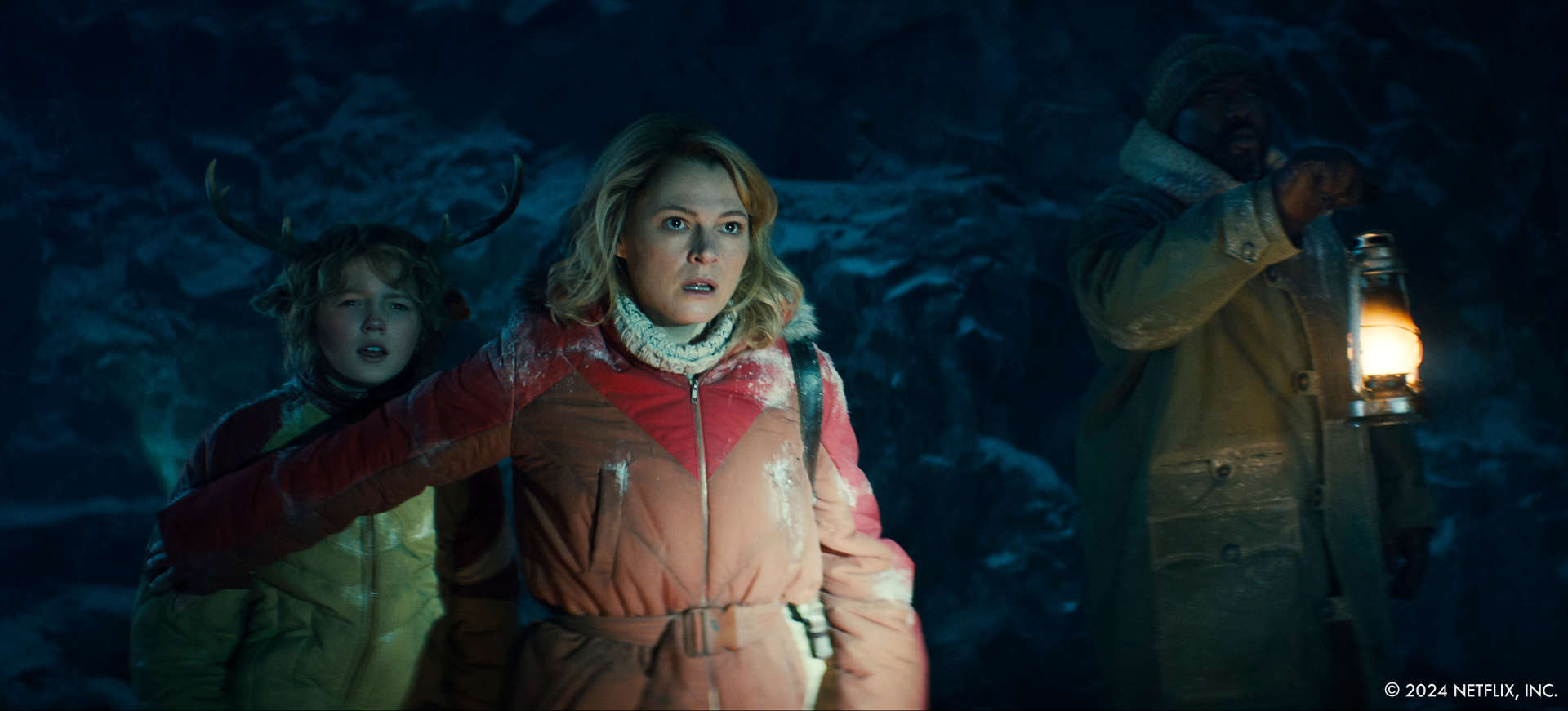
In the final Season, what specific techniques or technologies did you use to enhance the visual effects compared to earlier Seasons?
Matt Bramante // The LED walls were critical to this Season. Not only because they allowed us to bring a lot of locations back to stage, but they also allowed us to avoid using green screens and blue screens unless we really needed it. In previous Seasons we had just tip toed into using LEDs, they were only used in specific scenes or as an answer to car driving work. And that was still the case in Season 3, but we grew the use cases immensely, whole scenes were staged with just a floor and a few small set pieces in front of the LED. For example most of the Arctic expanse scenes through the Season, the post avalanche in 301, some of the 303 boat scenes, the snowy canyon in 307, the beast chase in 308, the 308 pubba forest dream, as well as all the windows in the Alaska outpost all relied heavily on LEDs. By episodes 307 and 308, we started putting photographed miniatures on the wall, which expanded out our options for how to achieve scenes like the Arctic canyon when Jep, Birdie and Gus are looking for the cave mouth.
Rob Price & Danica Tsang // Much of what we do is standard at this point—collecting scans and data on set and jumping to virtual assets for environment, vehicles, and characters. This Season, we added utilizing miniatures for environments like the Arctic church set, and vehicles for the chase sequences. This meant we needed identical versions of our assets as full-scale, miniaturized, and digital, so that we could push the scope of what could be achieved across the board. Shot to shot, you never really know which of those three you see.
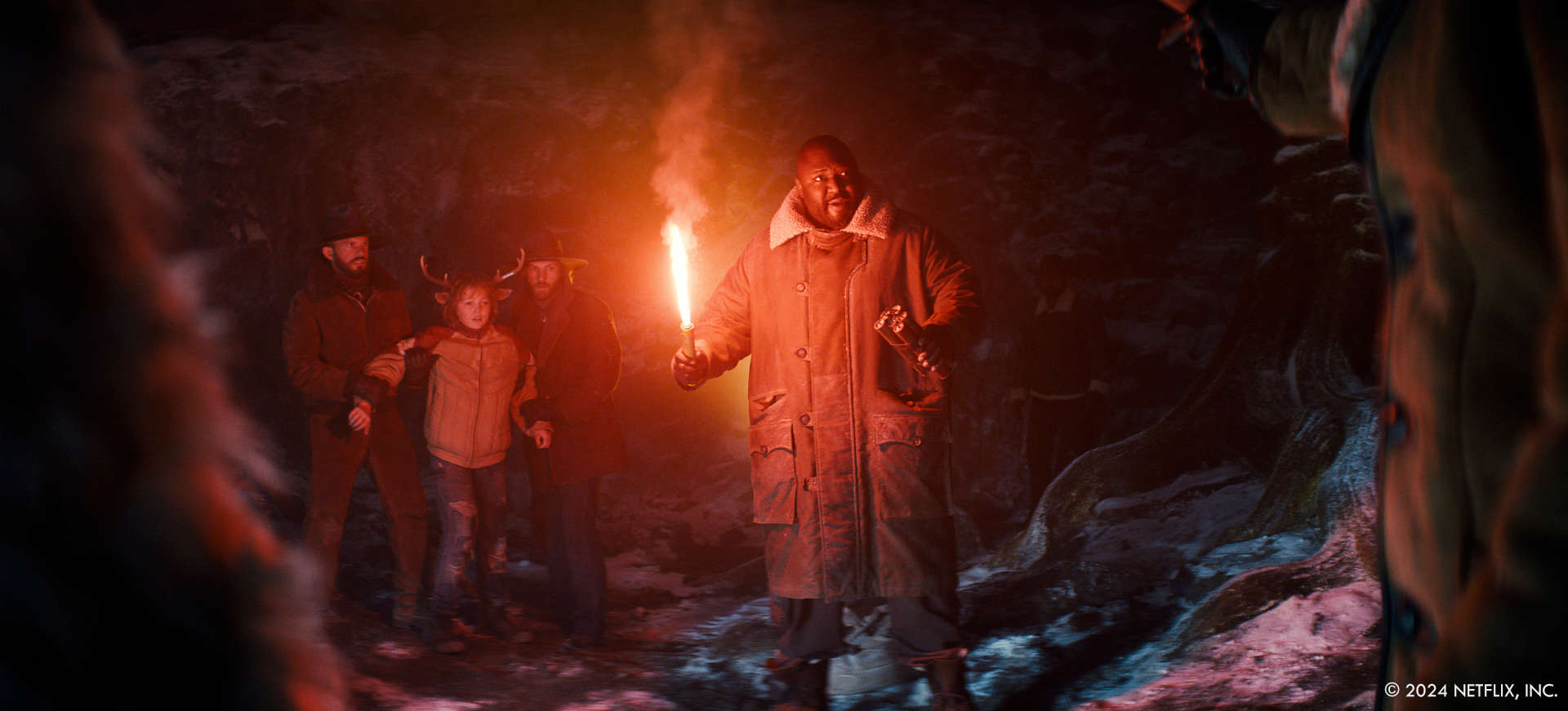
Can you tell us about the collaborative process between the VFX team and other departments to bring the children to life on screen?
Matt Bramante // Season 3 has a lot fewer hybrid kids than Season 2 did, but it’s notable what the new hybrids were. The wolfboys, which start as largely practical animatronic masks, but have a lot of VFX enhancements from the Zoic team. Going all the way back to the end of Season 2, we knew these guys were coming. Jane O’Kane, the hybrids team designer started working up designs for what they could practically do. We talked a lot about how large structure changes, like jaws opening and closing would be difficult for VFX to do, but the small soft tissue articulation like lip curl, nose sniff, etc are places we could help. So the wolf mask prosthetics were designed to have animatronic jaws, and some minor nose scrunch and lip articulation. Then in post, the Zoic team added a lot of 2D articulation to the muzzle, nose and lips to really give them life and take away any mechanical feeling left in the mask. As we got into the later episodes and the wolf boys become more viscous, the Zoic team also enhanced the teeth by adding extra drool to the mouth.
The other new hybrids this Season consisted of a couple of new born babies. The mouse baby in 302, the wolf-boy babies in 303, the baby hermit in 306, and the walrus baby in 308. Each has a different approach. The mouse baby has a digital set of ears for shots with a real baby, as well as a full non-animatronic prop baby, that needed digital enhancement to bring to life. The baby hermit needed digital nose, ears and antlers. The walrus baby and wolf-boy babies both had similar approaches. Both with pupeteerable mouths that could open and close, and a grab hand that could articulate, but needed digital manipulation for eyes, cheek, nose, lip articulation, etc. These struck the same balance as the full wolf-boys, using the practical for the large structural articulation and allowing the digital side to give them life with soft tissue animation.
Rob Price & Danica Tsang // It’s about how we can enhance the children further. The big ones this Season were the Wolf Boys. Their practical effects makeup was outstanding, and the stunt actors performed amazingly. We focused on adding facial performance with 2D animation and cleanup of stunt-related equipment to ensure the audience never questions whether this is a realistic hybrid child they are looking at. Adding some extra touches like drool helped to expand the character’s ability to emote and perform. We also worked closely with the stunt team on how we approach each scene. Each stunt had slightly different costumes, make-up, and safety rigging needs that we needed to accommodate for.
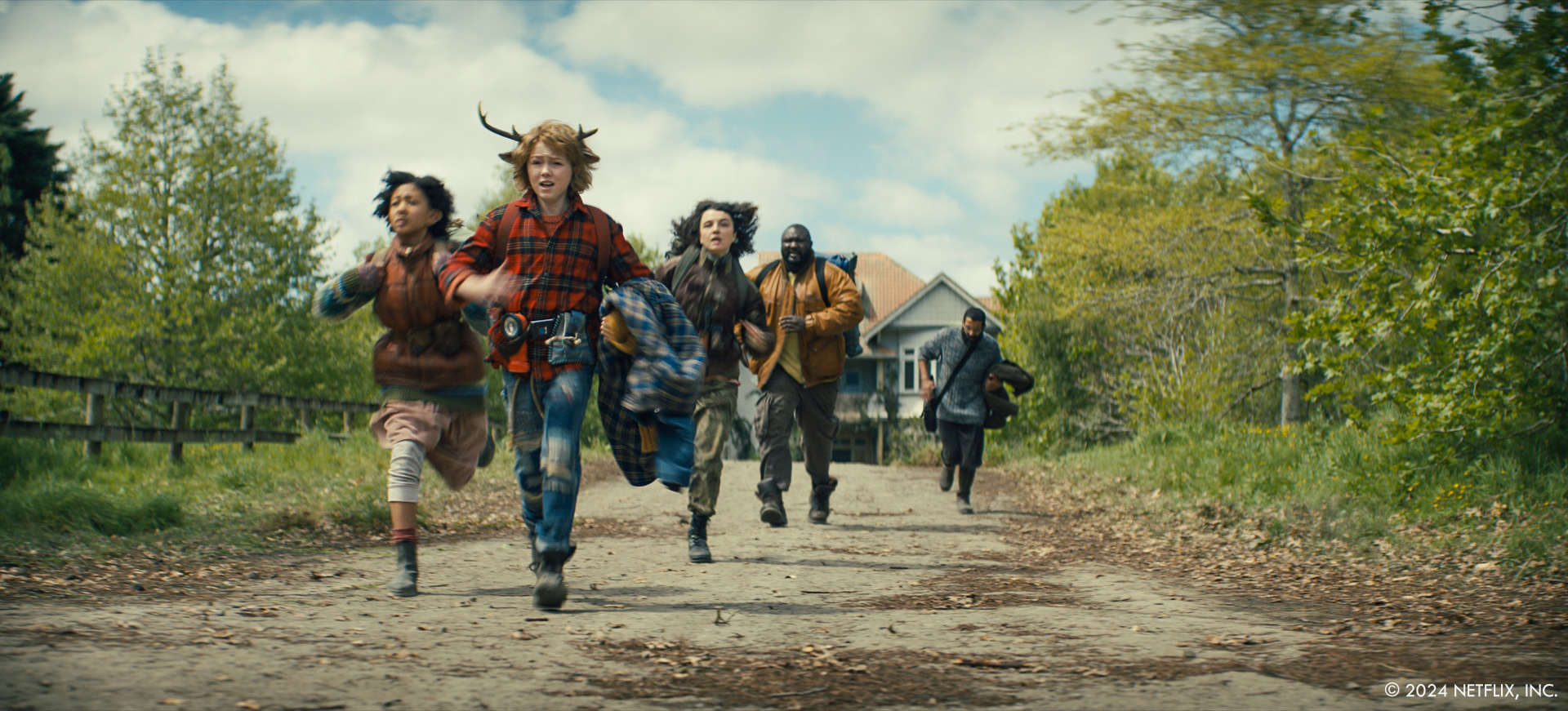
Were there any particular inspirations or references you drew from when designing the children’s visual effects?
Rob Price & Danica Tsang // As most of our work this Season focused on the wolf boys, there were copious references for how wolf muzzles deform and change shape during different emotions. Most of our wolf boys show their emotions through aggression, but occasionally we have some tender moments. We needed a full range of animation.
Sweet Tooth features a variety of unique environments. How did you approach creating and enhancing these environments using visual effects?
Matt Bramante // Much of this starts with the amazing art department team, Nick Basset the production designer and Al Gillies the senior concept artist as well as the whole team of art directors and concept artists are fantastic at taking real world reference and finding the particular flourish to give it the Sweet Tooth fantasy aesthetic. So a lot of the VFX work is really building off that very strong foundation.
One scene in particular that fell to us in VFX to figure out was the vision of pubba in the burnt out forest in 308. We had gone around in circles for weeks on what that should look like. Real world reference looked too apocalyptic, there weren’t any real locations to shoot that at. So we had earmarked it early on for LED stage work. We went out and shot plates of a real pine forest, but none of it had the right feeling. So we started throwing together previs versions of it, building out a digital forest and just changing the color palette, moving trees around, moving the light around, until we hit just the right balance of surreal painterly aesthetic and realism. Something hopeful but desolate, rather than scary and apocalyptic. The final renders for that scene were literally dropped into the environment minutes before the cameras rolled.
Rob Price & Danica Tsang // We always discuss what we need for the story first. Many of our environments were on a grander scale this Season, so we start with concept art. The art department created multiple ideas of what we could see, and building off that, we folded those ideas into what we had on location or the stage builds. This Season had a lot of different arctic environments, and multiple stage builds needing buildings, caves, or tundra extensions. Elements like vehicles shot on location often needed complete CG snow environments constructed around them. Some locations with smaller areas dressed with practical snow would also require expanding to help tell the story, including digital weather and interactive elements within the landscape. A wide range of techniques helps with visual variety and overall believability in environment work.
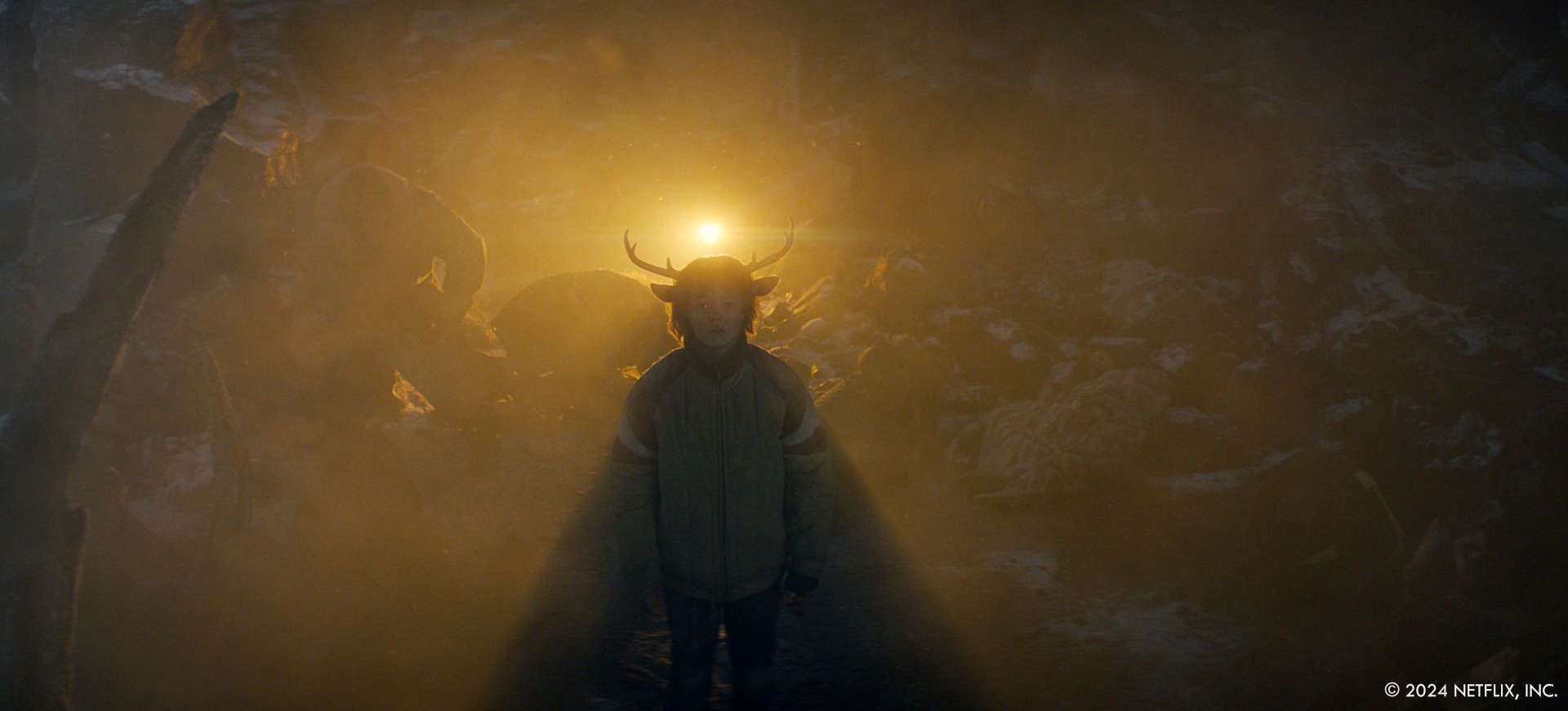
Did you face any specific challenges when creating the post-apocalyptic world of Sweet Tooth in terms of visual effects?
Matt Bramante // Thankfully, as the Season headed further out into the wilderness, we were able to work on a different sort of post-apocalyptic aesthetic from previous Seasons. Jim had always loved the idea of nature reclaiming the environment, but as we headed further and further north, there wasn’t a lot of human infrastructure for nature to reclaim, so we could largely focus on beautiful natural and fantastical environments.
In the case of Alaska, this meant lots of snow capped mountains and hills of snow. But also, as we journey out to the cave mouth, Jim and Nick came up with the idea of a canyon that acted almost like a maze our heros would have to find their way through. After looking for places we could shoot something like that, we quickly found there just wasn’t a real version of that environment. Running out of time, and our set build resources committed largely to the building of the interior cave, we elected to build a few miniature canyon walls. We shot BG plates and wide shot plates of those walls and put them up on the led screen, and that ended up being our canyon. A largely in camera approach to this scene. It then fell to the Zoic team to comp a few high and wide shots with digital canyons or extensions off the miniature plates to give us the full scope and scale we were looking for. Overall it was a really successful approach to something that would have been a world of green screen otherwise.
Rob Price & Danica Tsang // Expanding a world into a post-apocalyptic world was a little simpler this Season. Our story takes us further and further into the wilderness, and further away from man-made structures needing to be broken down. This Season was all about creating large landscapes with scale and vastness. Small remnants of the world are often left behind, but much fewer than in Seasons one and two that had large post-apocalyptic cityscapes.
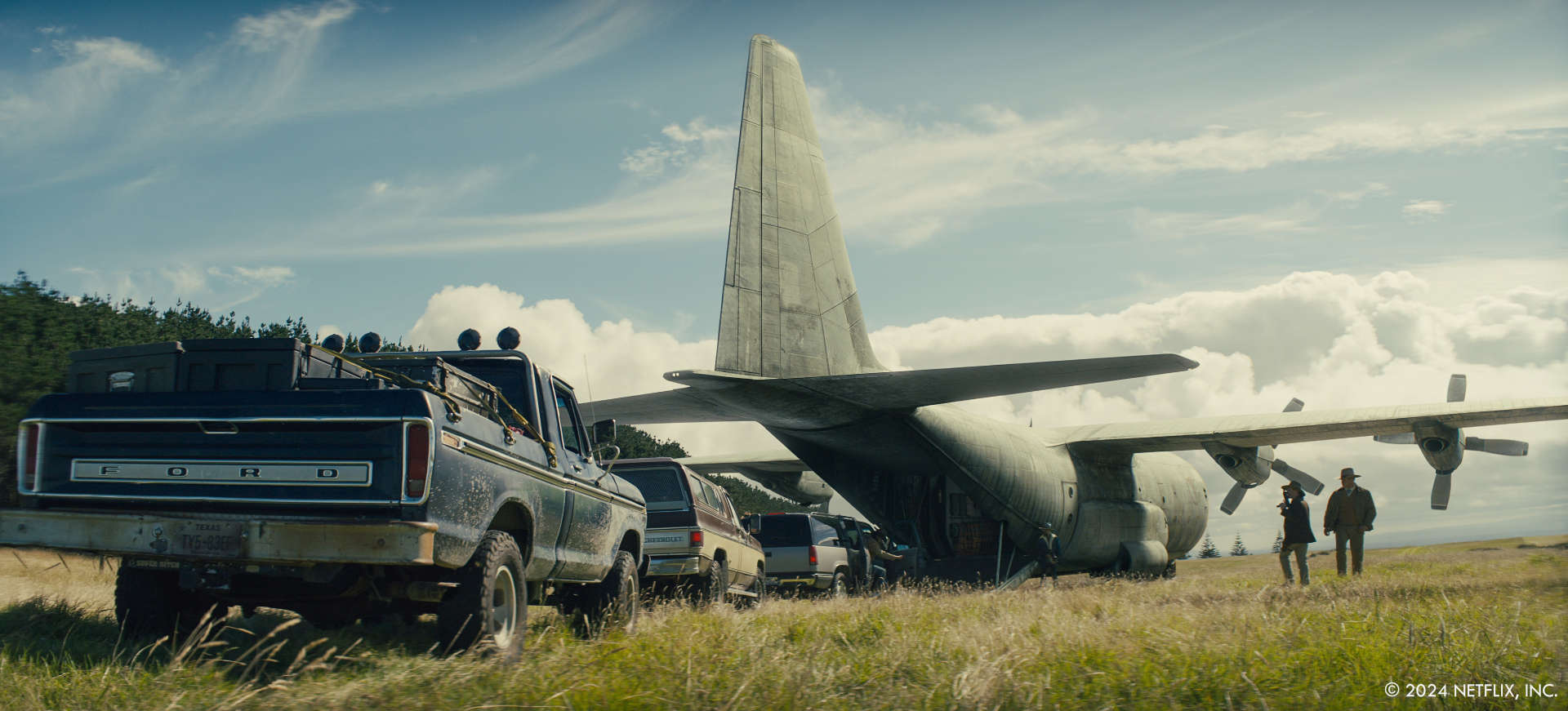
How do you balance practical effects with CGI to maintain the show’s aesthetic?
Matt Bramante // A lot of both. My general approach is close-ups want to be more practical, wides want to be more digital. We never wanted to have a wholly digital shot, instead we’d shoot a plate and add and enhance. This gave us a lot more grounded camera work, and gave us lighting, animation, and look reference to match into. The Zoic team did a handful of huge shots that have very small pieces of plate in the comp, so they’ll were largely building out huge CG worlds for those. But the goal was to let those wide shots really act as big singular moments rather than rely on it for whole scenes. The goal of the VFX on sweet tooth was to use VFX for the things we couldn’t do in any other way.
Rob Price & Danica Tsang // We always aim for a realistic aesthetic for this show’s VFX, which lends well to balancing shots with special and visual effects. It usually comes down to a conversation about time or budget for the best solution in a scene.
The final Season has more elaborate action sequences. How did you approach creating VFX for these action scenes?
Matt Bramante // Previs was critical, especially on the beast chase in 308. That sequence was shot over three units and 10 days. That began with a previs sequence we worked up even before we had a full script. Once Jim was happy, I worked with Toa our producing director and Axel our scheduling producer to break down how and where each piece would be shot.
We had a quarry with some dirt and rock walls we sprayed snow onto for our stunt driving work, then we had all the closeups with actors on LED stage, and finally we had a miniature “beast” truck built for the roll at the end of the scene and for the top of the scene when the beast bursts through the sign. We started with a map of the quarry, and camera directions and camera mounts based off of the previs. Listing out how each shot would be done, hard mount to vehicle, tracking vehicle, drone, etc. In the original schedule, we were set to shoot the ext stunt work with splinter unit a week before the stage work on LEDs, so our team would have time to shoot BG plates, process them and put them up on the wall. But best laid plans often go awry as they say, that went out the window and of course those all got smashed together, and we’d shoot the plates the night before and then they’d need to be up on the wall the next day. Which largely worked, but eventually we started getting into places where the practical location was limited. We wanted to see the tops of the walls of the canyon, which simply didn’t exist on location. So we had to build out a digital canyon and make CG plates for the driving work. Which worked out really well.
Finally, we got to the crash and the beast roll. Early in the process, Jim and I had talked about options for this, and he really liked the idea of using a miniature for the roll. It was funny, we started looking at overcranked videos of toy cars flipping over and just loved the aesthetic. So one day, Jim came into the office with a big RC tank toy to test the idea. Cut to, Jim, Dave and I throwing an RC tank into SFX snow with a little camera shooting 1000fps. And it looked pretty awesome, and it also was one of the most fun days of RnD I’ve ever had on set. Once the concept was proven, it then fell to Justin our miniatures builder to build up a mini beast. Which in final form was fully RC and could drive up to 70kph, had fully working headlights, magnetic detachment points for the large crane and other parts of the truck. Overall it was a beautiful build, so beautiful, that on the day, the only person who could actually throw it was Justin himself. We had 2 days with the miniature. One of driving shots, close ups on tank treads, knocking over the sign, and the start of the roll which we largely were doing in a controlled way. Then on day 2 we’d load it up and threw it into snow banks. All of it shot in phantom at 1000fps, rolling through sodium bicarbonate (baking soda), and it turned out great. Just like most other effects on the show, it then also fell to the Zoic team to take these all home. All of these needed digital snow, atmosphere, and light enhancement, because even with the miniature headlights, they just weren’t powerful enough to look like big headlights at 1000fps. Once it was call cut together, it made for a really exciting sequence.
Rob Price & Danica Tsang // Early planning is key. Many shots had multiple layers of complexity: dynamically moving cameras, animation, set extensions, interactive weather, and environment effects all in the same frame. I sit down with our Digital Effects Supervisor John Fukushima to discuss the best approach for each challenge individually. It’s rare that one shoe fits all; a lot goes into deciding on a shot level what package is best for a particular effect.
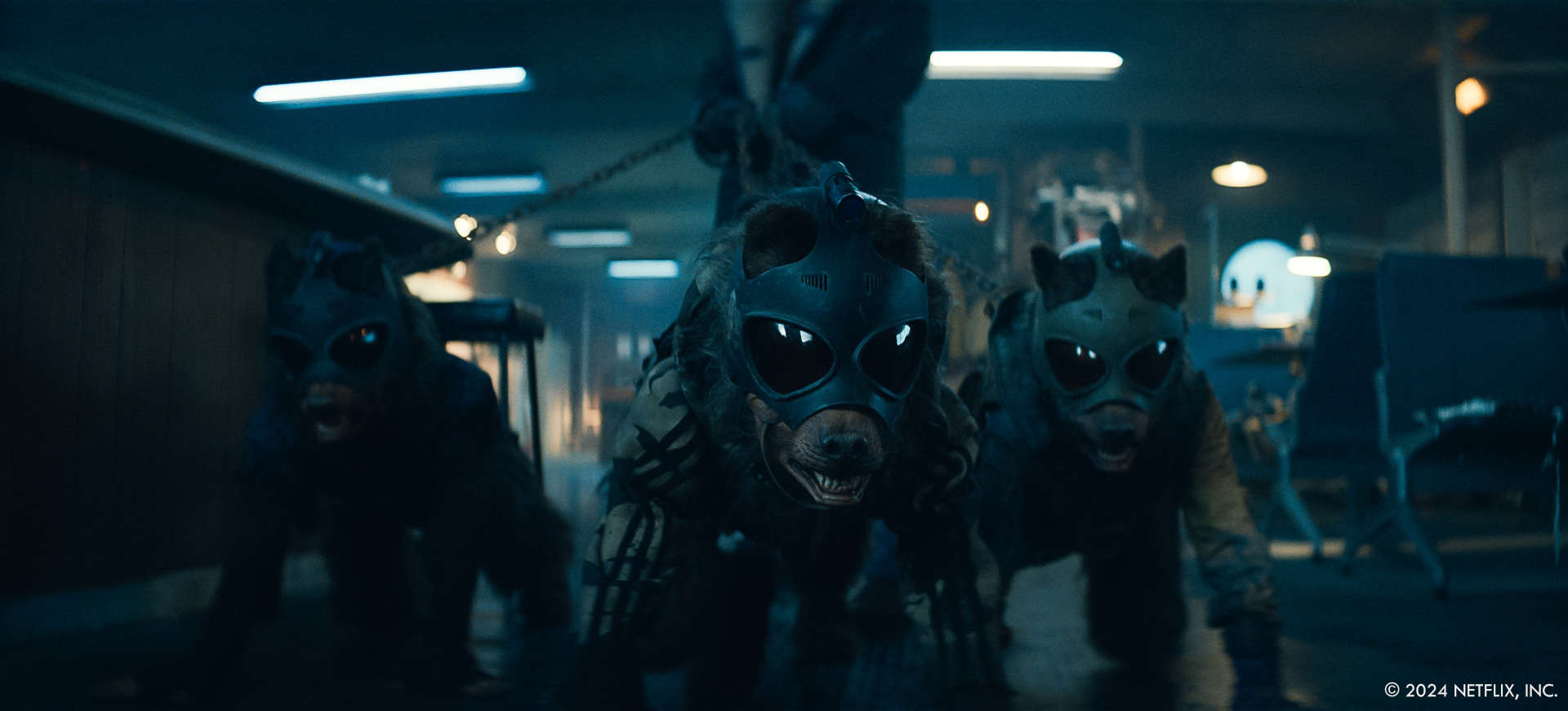
Can you share some insights into the process of integrating visual effects seamlessly with live-action footage?
Rob Price & Danica Tsang // Attention to detail and identifying artifacts within the lensing and lighting of a practical plate is critical. On Sweet Tooth, our first focus was working with the directors and producers to hit the creative challenge. Once approved, we return for a second round of intense quality control with our comping supervisors, Frank Riley and Graeme Baitz, who ensure that all the finer integration details are achieved.
Were there any scenes or effects in the final Season that were particularly challenging to create?
Matt Bramante // One that was a big concern to me early in the process was the scene in 305 when Gus first arrives in Alaska by boat. This was our first introduction to Alaska really at the ground level with Gus, and it needed to be spectacular, and it needed to be outside, and we were shooting it in Auckland in the height of summer. Even the South Island didn’t have snow at this point anywhere below the summit of mt cook. So we knew we had to find another approach. Our designer Nick had an idea to use this old muscle farm on the coast, it had all this great old fishing equipment and even a derelict grounded boat and these big stone pebbles that matched a lot of Alaska coast reference we found. SFX covered the area in environmentally safe foam snow, and we had a couple clean angles looking out to sea or into the equipment all covered in snow. But anything wide looking inland saw the big green hills behind everything. So the Zoic team added a big beautiful mountain range behind all the shots looking toward land. It’s a really nice sequence that does a good job of opening the scope and giving us a nice introduction to Alaska.
Rob Price & Danica Tsang // If so, how did you overcome those challenges? One of the most difficult effects ended up being a simple sweater. Creating a photo-real CG sweater in a close-up, stretching as it is ripped open, led us to procedurally knit a sweater within Houdini to simulate all the fibers coming apart — a more in-depth process than it seems. We now have a CG supervisor who knows how to knit.
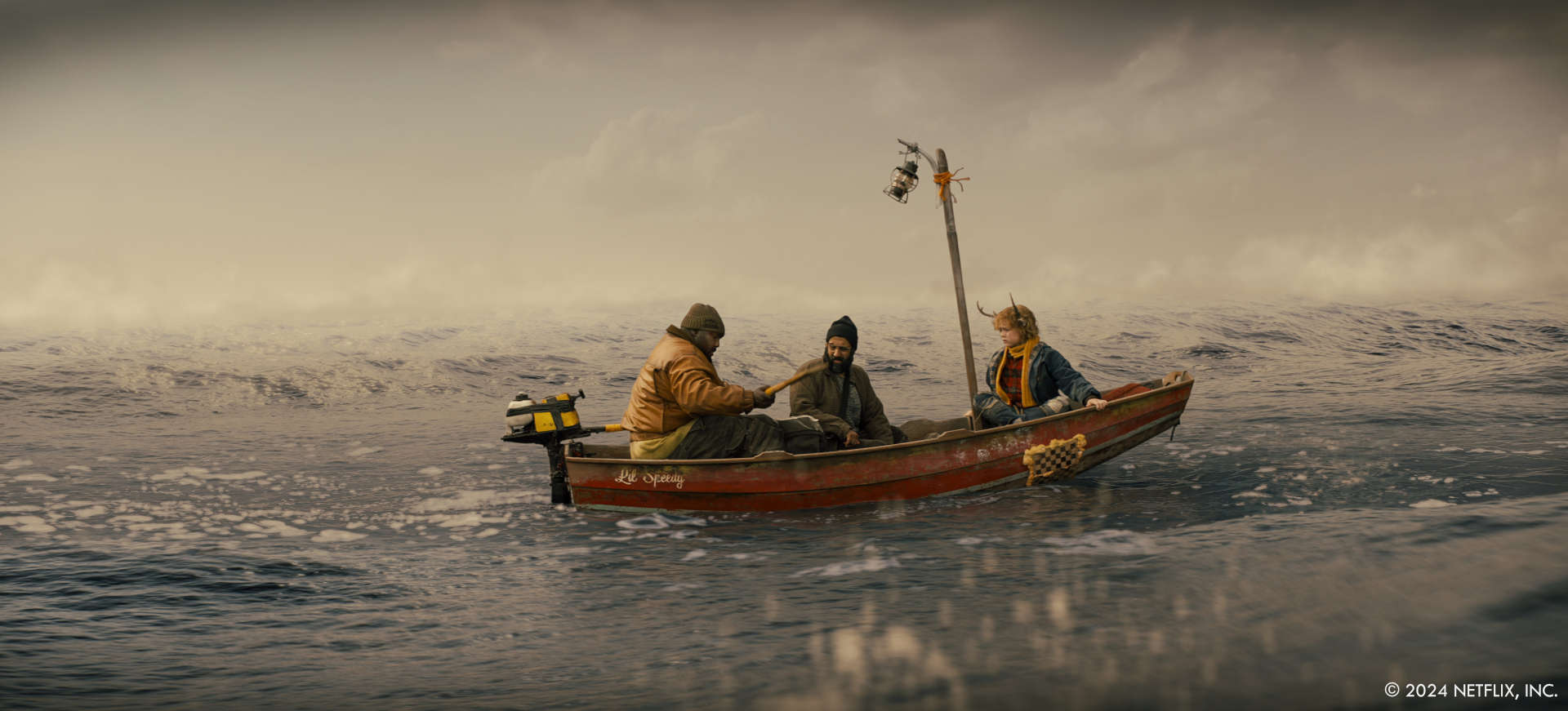
The series blends fantasy elements with realism. How did you maintain this balance in the visual effects?
Matt Bramante // I think our overall approach to the show of looking for practical solutions or photography to start from did a lot of that for us. By keeping the VFX work in a place where it is used to enhance and sweeten what is real and practical, it allowed for very tangible effects work. So any given CG element didn’t feel too unbelievable or fantastical.
Rob Price & Danica Tsang // We always look for how these more fantastic elements can fit into the real world. For example, our owl girl can’t move her eyes just like owls can’t. We determine how a hybrid would move or emote by taking inspiration from the animal with which they are hybridized. This applies to any extensive environment work as well. When the antler tree is consumed by flames, we referenced the way trees burned and smouldered. Although the tree itself has a fantastical design, it still interacts with the world around it according to real world physics.
Were there any fan-favorite visual effects from earlier Seasons that you revisited or expanded upon in the final Season?
Matt Bramante // I think the very end of the show does a nice job of bringing back everybody’s favorite hybrid kids. It’s a nice way of saying good bye to the show, and gives us another chance to see Bobby.
Rob Price & Danica Tsang // We had one last CG Bobby shot at the end of the series finale. We have become very used to our VFX on Sweet Tooth being “invisible”. It’s a little-known fact that there is a CG version of Bobby for scenes where the puppet can’t perform more extensive actions or stunts. Having one last shot was a fitting goodbye to the series for the VFX team.
Did you have to create any new techniques or effects specifically for the final Season?
Matt Bramante // I touched on it a bit before, but I would say the biggest new technique this Season was the addition of miniatures. It’s something we had talked about before, I think at least once per Season the word miniature would come up. But this Season we decided early in prep we wanted to give it a try on the exterior of the church. The set Nick designed for the int was beautiful, this somewhat collapsing old church. And the exterior which was only needed for a couple of shots and would have been too difficult to build at full scale, and if we did build it, we’d have to do a CG environment around it. So we went with a miniature build, which then was comped into a larger environment with snow and atmosphere, and had gus and the hermit shot on green screen comped into it. And it worked really nicely. We even shot a plate of the church for 307 that we put up on the LED wall to get another instance of an in camera VFX solution. We had to get really specific about we could and couldn’t achieve with this, so previs was critical for those scenes, but it’s a nice solution. By the end of the Season we expanded the use of miniatures to include the snowy canyon in 307 and 308, and the beast for the beast chase in 308.
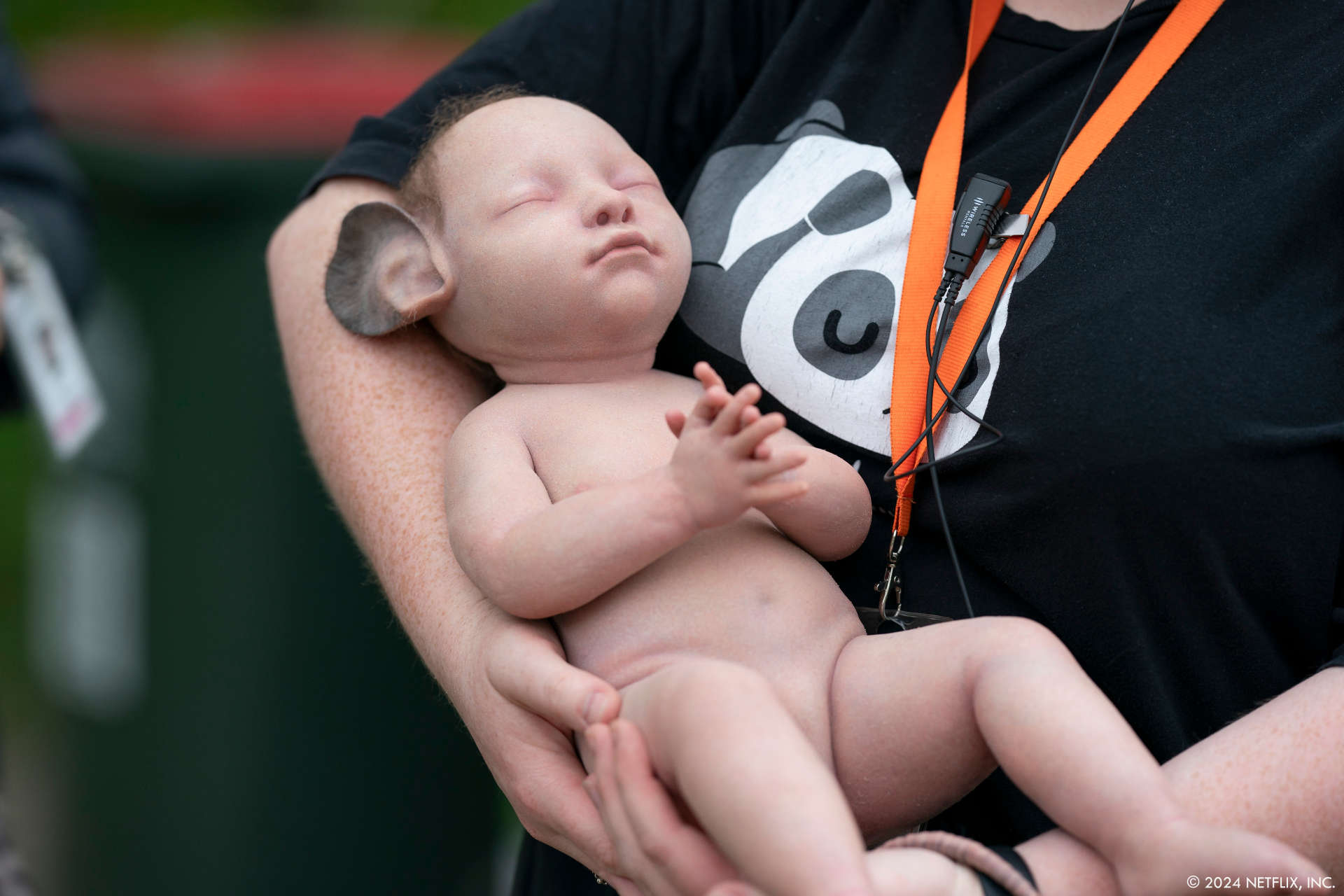
Were there any unexpected technical or creative challenges encountered during the production?
Rob Price & Danica Tsang // Large scale dynamics simulations are always both technically and creatively challenging. For the avalanche sequence, we needed to hit precise timing and scale cues to give us the feeling of such a significant event. This is where having our CG pipeline based inside one package (Houdini) has helped us. The environment, effects, and lighting teams working in concert was vital.
Were there any memorable moments or scenes from the series that you found particularly rewarding or challenging to work on from a visual effects standpoint?
Rob Price & Danica Tsang // I am particularly fond of Daisy the tiger from Season 1. We spent a lot of time developing the asset and I was extremely happy with how she turned out. The animation, fur simulation, and muscle system gave the viewer a visceral reaction for the surprise reveal and really hammered home the story point that this was now a brand new world.
Looking back on the project, what aspects of the visual effects are you most proud of?
Matt Bramante // Sweet Tooth is a complex project, with one of the most ambitious schedules I’ve ever worked. The sheer volume of different types of environments and different types of effects that all needed to be planned and developed and executed on. The scale of that task alone is a huge point of pride. But of course Season 3, for me marks the high water mark of that.
Rob Price & Danica Tsang // I am very proud of the entire body of work, but some of the creature and hybrid work, especially our good friend Bobby, will always have a special place in my heart.
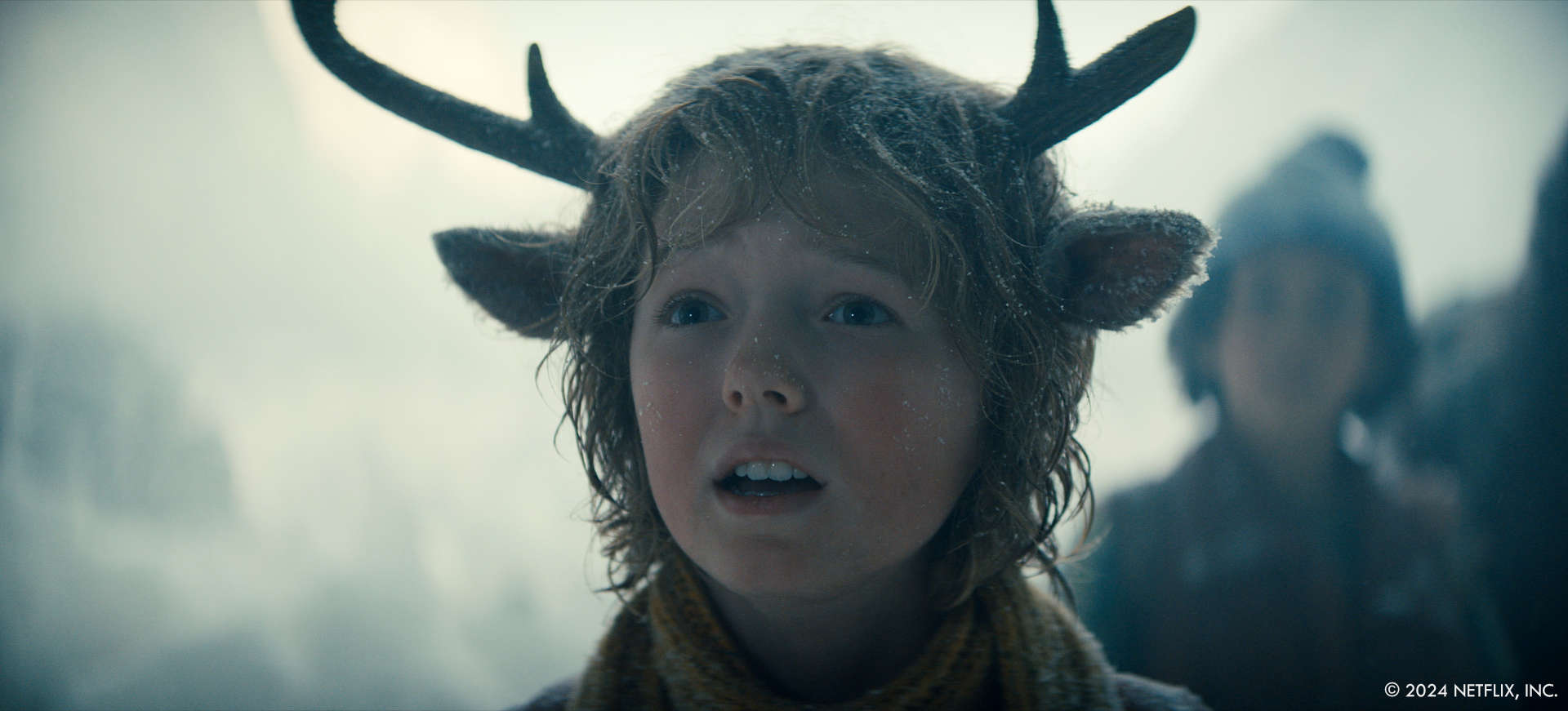
How long have you worked on this show?
Matt Bramante // I first flew to New Zealand August 1st, 2020. There were a few gaps between Seasons, after Season 1 for instance, we waited nearly a full year before Season 2 went. Seasons 2 and 3 were back to back. So about the last three ish years, but with a bit of time on other projects between Seasons.
Rob Price & Danica Tsang // Danica and I started on the pilot in the summer of 2019 and have been on the project for its five-year duration.
What’s the VFX shots count?
Matt Bramante // Zoic had nearly 500 shots according to my records, Rob and Danica can probably elaborate on that. We had another vendor with about 100 shots, another probably 70 in online. And I have a list of a little more than 80 sets using LED walls through the Season. So it’s a large volume of work.
Rob Price & Danica Tsang // We had 475 shots this Season. Over the course of the entire series, we worked on just under 2300 shots.
What is your next project?
Matt Bramante // I just finished filming and am a couple weeks into post on a feature film named The Woman in the Yard for Blumhouse, directed by Jaume Collet-Serra.
Rob Price & Danica Tsang // Danica and I are currently working on an A24 film, Death of a Unicorn.
A big thanks for your time.
© Vincent Frei – The Art of VFX – 2024




